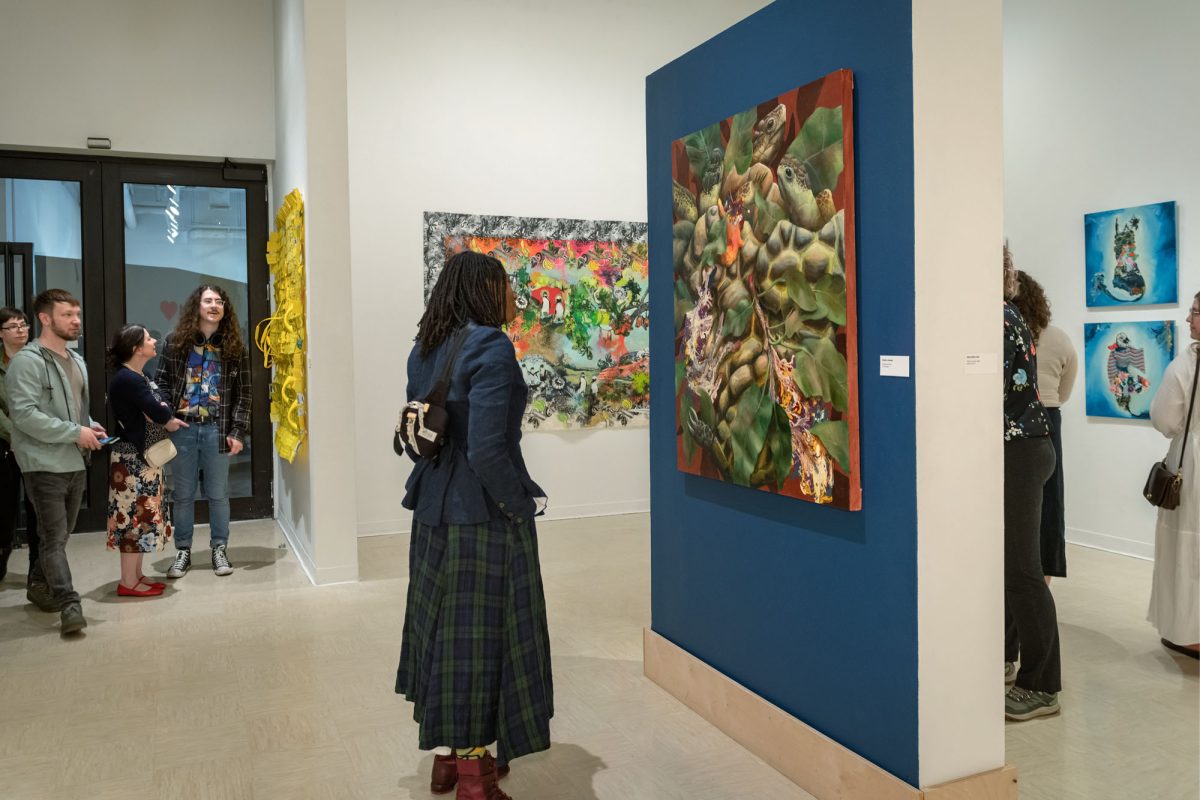” The art on the first floor windows of the Polsky Building give those passing by a glimpse into the culture and history of the University of Akron campus and the Akron community. Seven UA graphic design students have filled the windows with vibrant colors and graphics during a project that was initiated by the Department of Institutional Marketing.”
“
The art on the first floor windows of the Polsky Building give those passing by a glimpse into the culture and history of the University of Akron campus and the Akron community.
Seven UA graphic design students have filled the windows with vibrant colors and graphics during a project that was initiated by the Department of Institutional Marketing.
Ron Ramos, creative director, described Polsky as one of the front doors to campus.
We want it to have a welcoming presence and to create interest in the university and all that is happening here, he said.
Professor of art, Janice Troutman said that the main point of the project was to tie together downtown Akron and UA campus and the location of Polsky made it a great place.
The windows boast images of the Goodyear Blimp, E.J. Thomas Hall, an All-American Soap Box Derby racing car, the InfoCision stadium and many others.
When the time came to create a new look for the windows, we wanted to give our students the benefit of doing a large scale project such as this, Ramos said.
We wanted the windows to represent their interpretation of Akron as an urban city and how UA is a part of that.
Jeff Dumire, a graphic design student who developed the method used for the windows, described it as a fractured glass technique and said an art show in Miami is what inspired him.
The method is time-consuming, but the effect can be pretty cool, he said.
What students have created is dynamic and nontraditional, with instant appeal, Troutman said.
Troutman also directs design x nine, a studio that is run as a class, as well as an agency.
Design x nine was started in 1995 as a small class setting for students to work on a wide variety of creative projects for the campus and the community. Only nine students can be on the team at a time.
They make posters, brochures and advertising materials for on and off-campus clients, while working on their own art projects.
The students began the project in March and finished in October.
The whole project took about 120 hours, Troutman said.
She said that most of the work was done in the summer, when students worked on and altered digital files of images they chose from a university image base.
The graphic art students involved in the project also took a few pictures of their own.
The images of the stadium were taken by the students. They also posed for a classroom setting picture.
Troutman explained that it only took approximately a week to actually put the images on the windows.
We were just really happy to have the experience, Troutman said of the project.
“











